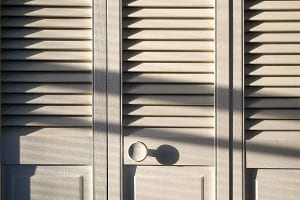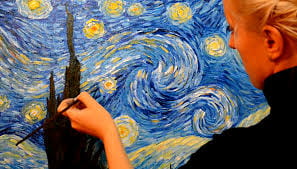Following this lesson you will find the last assignment of the course.
We have been looking at and making PATTERNS as Art.
Thank you to https://paintbasket.com/using-patterns-in-art/
for their contributions to this lesson.
Patterns
Patterns have way of having a positive effect on the brain. It is through the repetition in the pattern that our brains expect a repetition and when that repetition happens we find it soothing or reassuring. Making art with patterning in it is a soothing process. It also has a soothing affect on the viewer. The key to patterning is the word repetition. In order to get a pattern we need to repeat something in such a way that the repetition becomes noticeable to the eye.Traditionally we think of patterns as being man-made, and we do enjoy creating a good pattern. Regular patterns are made to please:
Patterns are in Nature: we typically tend to think of nature as random and in general it does appear that way. But if we really start looking closely at it we will find that there are plenty of patterns in nature. Here is a typical irregular pattern you will find in nature:
Patterns don’t however need to be perfect copies of each other to be a pattern. We have a pattern of rocks, yet each rock is a different size, shape and direction. There are lots of patterns in nature. Look around and you will find them.
In this lesson you should learn :
- Different ways of making a pattern
and 2. how can we use patterns to make our artworks more interesting
Methods Used to Form Patterns
The most common method to create a pattern is to repeat regularly:
1) Repeating Shapes:
2) Repeating Objects Like the bricks in a wall
3) Repeating Directions Like the lines on this cupboard.
4) Repeating Changes In this pattern each line changes direction and gets gradually longer and longer forming a pattern.
5) Using a Central Point All the patterns in this radiate outward from the central point:
6) Repeating Colours -the red, the tan, the brown and the white are each repeating:
7) Repeating Images -the watermelon !
8) Even Repeating Brush Marks Each brush stroke in this painting is identical:
Using Patterns to Convey Emotions
We can use patterns to make our artworks more interesting by varying whether we repeat the pattern at regular or irregular intervals. This allows us to create different effects, atmospheres and even emotions in our artworks.
Keeping our pattern regular gives it a more structured and formal feel. There is a sense of order and calm in this artwork:
Irregular Pattern Emotions: When we use irregular patterns, we can create a busy, energetic effect. Sometimes even conveying chaos if the pattern is irregular enough.
Patterns can also be irregular.
- The irregular shapes pattern formed by the randomly shaped rocks in this wall gives it a rough and organic look:
3) Irregular Directions Each branch on the tree is heading in its own direction to form fabulously flowing patterns.
4) Irregular Changes Each of these lines are changing, but none are changing the same, giving the artwork and abstract feel.
5) Irregular Central Point All these circles are converging around a central point, but not radially like the spokes of a bicycle. Can you feel the tumbling effect it creates?
6) Irregular Colours These tiles are all different colours, yet they all are “tints” which connects them to work well together.
7) Irregular Images In this artwork each image is different yet they’re line drawn quality gives them a recognisable pattern.
Breaking the Pattern
Now we come to something that can really make your artworks stand out, and that is to break the pattern. This can be done in many ways, but the idea is to add an unusual element to your pattern. When you look at a pattern your brain is soothed by the repetition. It likes to look at patterns because that is how it operates.
We recognise everything we know because our brain has memorized each item’s pattern. That is why you immediately notice when somebody has coloured their hair a different colour. That colour differs from the pattern your brain has memorized. In other words the minute you break the pattern, your brain takes note and pays extra attention to this break in the pattern. It then tries to figure out what is different from the pattern it has stored in memory.
By the same token if you break the pattern in your artwork, then that break becomes the focal point of the artwork.
Here is a classic example:
We can see that there are THREE WAYS that PATTERN has been created in this artwork: 1) is a pattern of apples, 2) a pattern of horizontal direction, and 3) a pattern of colour (greys and blacks).
The artwork is presented in monotone then a dash of colour is added to the one apple – the focal point. The red apple breaks the pattern. Breaking the pattern gives an element of surprise and a special treatment to part of your artwork.
Your Assignment:
* Your challenge is to create an artwork that has several patterns in it using several of the methods from this tutorial. The pattern can be regular, irregular or even a combination of both. It can have direction pattern, as well as colour pattern, as well as shape pattern, for example. Or it can have radial pattern, and irregular shape pattern, and brush mark pattern.
* Then you must break that pattern in an interesting way. The place where you break the pattern will become the focal point to your artwork so it needs to have something special about it.
* You may use ANY art medium that you choose. This could be a painting, a pencil drawing, or a sculpture, for example.
* This is the final Pattern assignment so it is worth the most marks in this unit. Treat the work as your final showpiece.
* It is due next week – June 17.
Here are two examples of this assignment:
Please note that ALL assignments are due on June 17. I cannot accept any assignments later than that.


















